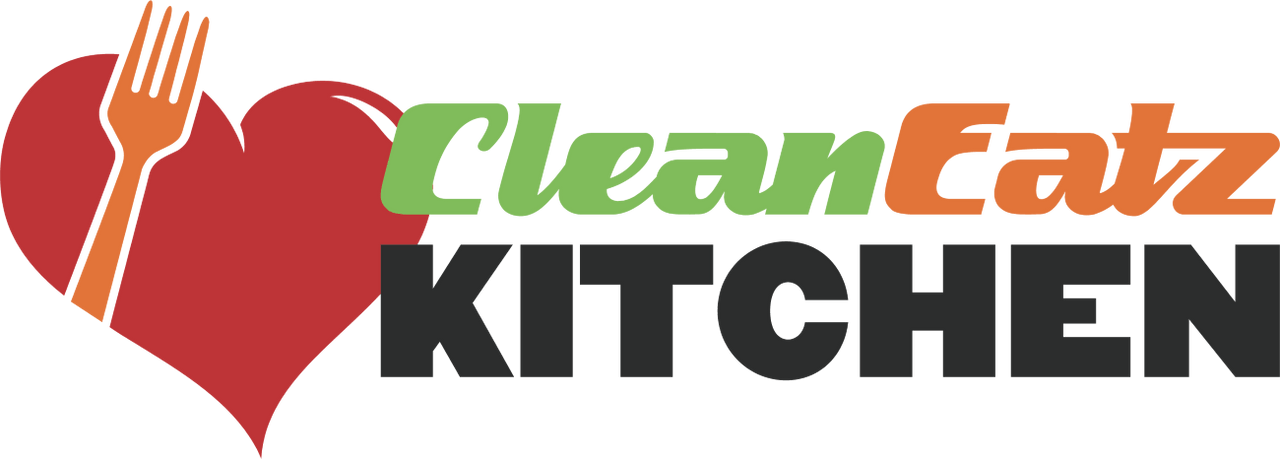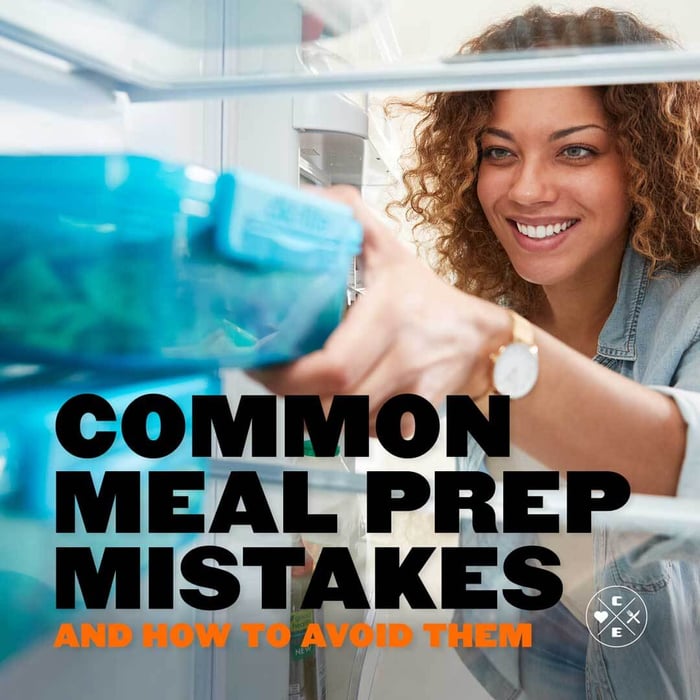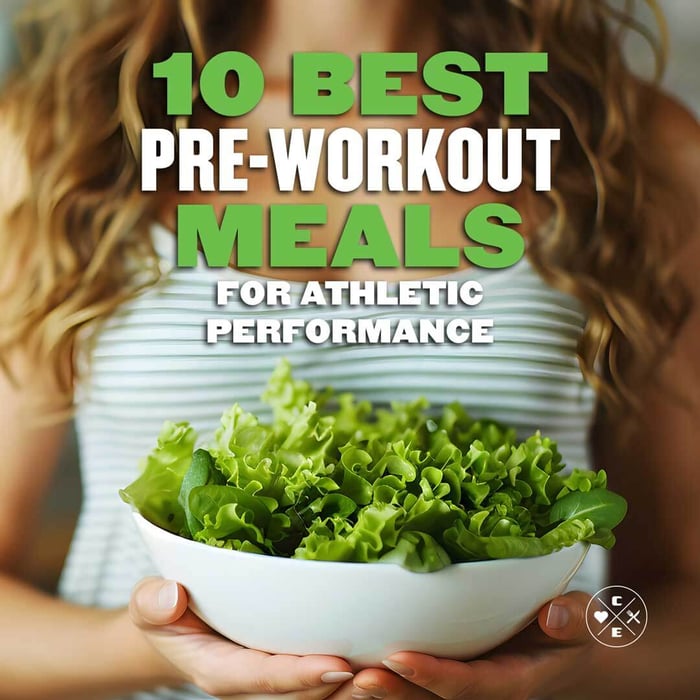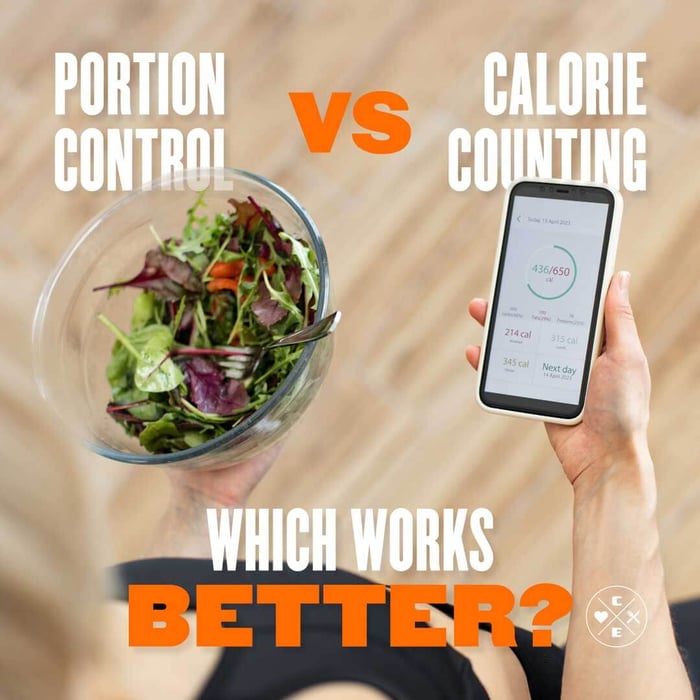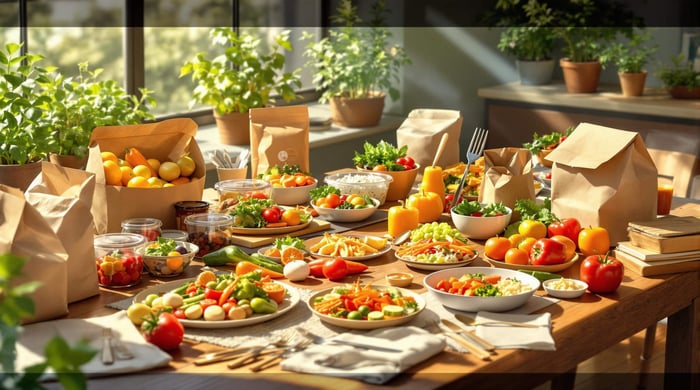
Meal Delivery Plastic Waste: Problems and Solutions
Jason Nista
Healthy Lifestyle
6 minute read
10 Sustainable Food Packaging Companies To Support
Solutions at a Glance:
- Biodegradable Packaging: Use plant-based materials like PLA that break down naturally.
- Reusable Packaging: Programs like TerraCycle offer returnable containers to cut single-use waste.
- Recyclable Packaging: Companies like Hello Fresh provide clear disposal instructions to improve recycling rates.
Challenges:
- High Costs: Switching to eco-friendly materials requires significant investment.
- Consumer Education: Proper disposal of packaging depends on clear guidance.
- Regulatory Support: Policies like California’s EPR can help reduce costs and improve recycling infrastructure.
Quick Comparison Table:
| Solution Type | Pros | Challenges |
|---|---|---|
| Biodegradable | Breaks down naturally | Expensive and not widely used |
| Reusable | Reduces single-use waste | Requires return logistics |
| Recyclable | Easy for consumers to adopt | Needs proper guidance |
Meal delivery companies must balance convenience with reducing their environmental impact by adopting sustainable packaging, educating consumers, and working with policymakers.
sbb-itb-1989a25
Plastic Waste in Meal Delivery
Use of Single-Use Plastics
Meal delivery services heavily depend on single-use plastics. In some cases, up to 90% of the packaging used by these companies is plastic. This reliance adds to the staggering 2.2 million tonnes of plastic packaging entering the consumer market every year [3].
Impact of Plastic Waste
Plastic waste has a massive impact on both landfills and oceans. More than 75% of plastics end up in landfills, where they can remain for hundreds of years [2]. In oceans, about 44% of plastic waste comes from takeout food and drinks, with meal delivery services playing a large role in this pollution [4].
Industry Examples
Several big-name meal delivery companies have faced criticism for their unsustainable practices. Here's a quick look at how some of them measure up when it comes to plastic usage and recyclable materials:
| Company | Plastic Usage | Recyclable Materials |
|---|---|---|
| Home Chef | 90% | 19% |
| Hello Fresh | 66% | N/A |
| Blue Apron | N/A | 50% |
| EveryPlate | High | Low |
The production and disposal of these materials are also major contributors to greenhouse gas emissions, creating environmental damage that far outweighs the convenience they offer [2]. These issues highlight the pressing need for better packaging alternatives and a collective effort across the industry to reduce plastic reliance.
Solving these problems will require bold packaging solutions and a strong commitment from companies to prioritize sustainability.
Solutions and Packaging Innovations
The meal delivery industry is stepping up to address the plastic waste problem by introducing packaging solutions that cut down on single-use plastics while keeping food safe and fresh.
Biodegradable and Compostable Options
Materials like polylactic acid (PLA) and polyhydroxyalkanoates (PHA), sourced from plants or microorganisms, offer biodegradable choices that help preserve food freshness [1]. These materials naturally break down over time without leaving behind harmful residues, making them a smart alternative for reducing waste.
Reusable Packaging Programs
Programs such as Loop and TerraCycle provide meals in durable containers designed to be returned, cleaned, and reused. This system supports a circular economy and reduces the need for single-use packaging while maintaining strict food safety standards [4].
Recyclable Packaging
Many companies are turning to recyclable materials and providing clear disposal instructions to help customers recycle correctly. For example, Hello Fresh uses kraft bags and includes detailed recycling guidance to ensure customers can properly dispose of packaging [1]. Clear labeling plays a key role in making recyclable packaging effective.
Case Study: Clean Eatz Kitchen
Clean Eatz Kitchen stands out by offering recyclable packaging and focusing on frozen meal delivery to cut down on waste. Frozen meals reduce both food and packaging waste compared to fresh meal services. Their emphasis on recyclable materials and straightforward recycling instructions highlights how businesses can combine sustainability with efficiency, setting a strong example for the industry.
While these efforts are making progress, scaling these solutions remains a challenge. With advancements in technology and a growing focus on sustainability, these innovations are likely to become more accessible and cost-effective over time.
Challenges in Implementing Solutions
Switching to sustainable packaging in meal delivery services is no small feat. These challenges are often interconnected, with progress in one area relying on advancements in another.
Cost and Feasibility
Shifting to environmentally friendly packaging can be expensive for meal delivery companies. It requires investment in new equipment and adjustments to supply chains to handle these materials. For smaller businesses, these upfront costs can be especially tough to manage. To tackle this, many companies are rolling out changes gradually, incorporating sustainable packaging in phases while negotiating bulk deals with suppliers. But even when financial obstacles are addressed, the success of these solutions heavily depends on how consumers respond and participate.
Consumer Education
Eco-friendly packaging only works if consumers know how to properly dispose of it. Without clear guidance, even the best-intentioned packaging can end up in landfills.
"Few policies target plastic waste production at the consumer level, except charges on plastic bags. Our findings show that simple nudges can make a big difference in changing consumers' behaviors and could become a tool for policymakers as they confront the immense challenge of plastic waste." - Guojun He, Research Director at EPIC-China [5]
China’s utensil-free default orders are a great example of how education and small policy changes can make a huge impact. This initiative reduced utensil waste by 600%, showing how informed consumers can drive change [4].
Regulatory Support
Government policies play a critical role in making sustainable packaging more achievable. Initiatives like the EU's Single-Use Plastics Directive and California's Extended Producer Responsibility (EPR) policy help by providing tax breaks, subsidies, and clearer guidelines. Better recycling and composting infrastructure also make it easier for businesses to adopt eco-friendly options.
| Support Type | Impact on Industry |
|---|---|
| Tax Incentives | Lowers the financial strain of adopting new materials |
| Material Subsidies | Makes eco-friendly options more affordable |
| Clear Standards | Guides companies in making better packaging choices |
| Collection Programs | Enhances recycling and composting capabilities |
Collaboration between governments, businesses, and consumers is key to overcoming these challenges and moving toward a more sustainable future.
Conclusion and Future Directions
Key Points
In 2021, over 400 million metric tons of plastic waste were generated worldwide [5]. The meal delivery industry plays a noticeable role in this, largely due to its reliance on single-use plastics. This highlights an urgent need to explore better waste management and packaging solutions. Encouragingly, even small changes in packaging and consumer habits have shown positive outcomes, proving that it's possible to reduce waste without sacrificing service quality.
By focusing on improved packaging and engaging consumers in eco-friendly practices, the meal delivery sector can play a part in reducing plastic pollution. Policy changes that support these efforts can further amplify the impact.
Future of Meal Delivery
The challenges are real, but the future holds potential for creating a more responsible meal delivery ecosystem. Success will hinge on efforts in the following areas:
| Focus Area | Strategy | Impact |
|---|---|---|
| Innovation & Collaboration | Invest in better packaging and share research | Cut down on non-recyclable waste |
| Consumer Engagement | Incentivize eco-conscious choices | Encourage greener habits |
| Regulatory Support | Work with policies and improve systems | Standardize better practices |
The road ahead will require ongoing innovation and teamwork. Balancing convenience with environmental care means expanding sustainable packaging options, improving recycling systems, and fostering partnerships between companies, customers, and policymakers. These steps are essential to shaping a more responsible future for meal delivery.
Related Articles
Common Meal Prep Mistakes and How to Avoid Them
8 minute read
10 Best Pre-Workout Meals for Athletic Performance
14 minute read
